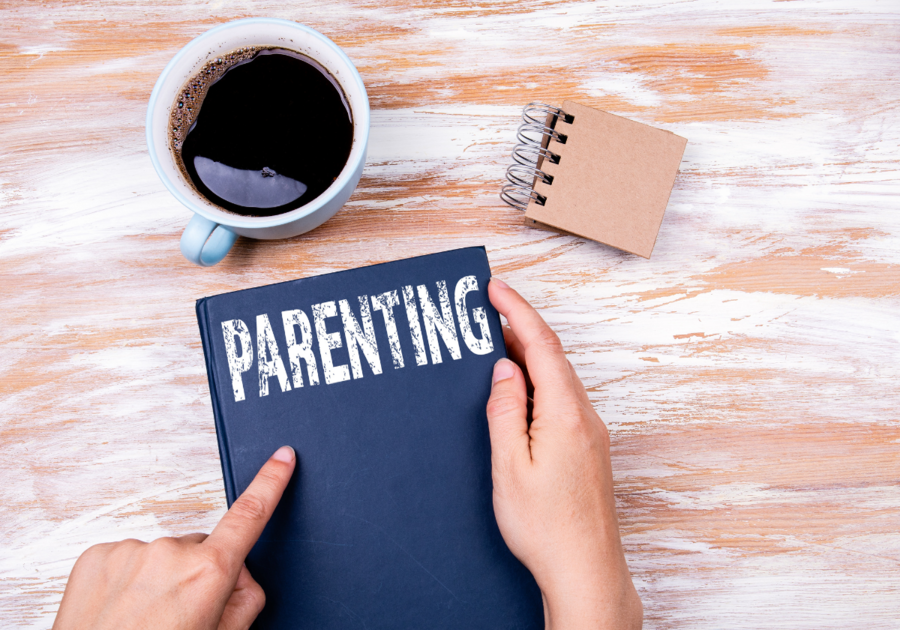At lunchtime today, my toddler wailed in her highchair over a piece of cheese. I said she could have it and she was super excited, only to find out that the cheese had gone bad and had to be thrown out. She was devastated and acted like the world was ending. As a parent, I’m sure you can relate to this scenario. It may even be a relief to know you are not the only one whose kids do this. Kids have major reactions to seemingly trivial circumstances which can be hard to navigate until we find new ways to support their big feelings.
I used to think “Oh it’s just a piece of cheese, no big deal, I’ll just give her something else she likes so she will stop crying.” Then I learned that this was dismissive and invalidated her experience, which leads to disconnection in the relationship and within her own body. I also noticed that getting her to stop crying was more about my own discomfort with her sad feelings, so getting her to stop crying was really about making myself feel better. When we don’t allow for sad feelings, they don’t go away—they just stay unprocessed and build up to only come out later, perhaps as a full blown tantrum. It also teaches them that when they are sad, they need to find a distraction to be happy and are disempowered to rely on someone or something else to make them happy.
After learning new strategies to support my kids’ feelings, now I could see how much that cheese meant to her at that moment and I truly felt her sadness and disappointment about not getting something she was looking forward to. I was able to support her feelings so she could process them and let it pass. That’s why I want to share a simple tip to R.E.V. up your parenting. Like many things that are simple, it may not come easy right away, but with practice anyone can do it!
R.E.V. is a strategy/process that stands for Reflection, Empathy, Validation. I have found that definitions can vary depending on the person or situation, so I will clarify how I define and use these terms so we can all be on the same page.
●Reflection — to reflect means to notice and observe what you see, hear, and/or feel from another person. Then, you “send” those observations back to that person, either by visually showing them what you see or by verbally expressing in your own words what you see, hear, or feel. This provides the other person with information about themselves that they may not be aware of in the present moment. It can also be powerful for them to know that you are aware something deeper is going on for them.
Before I move on to Empathy, I want to make an important distinction between observations and judgements. An observation is something you notice by using one or more of your senses. For example: I see you fell down and skinned your knee. I heard you crying. You feel cold to the touch. It smells like you have a dirty diaper, etc. A judgement is when we place an evaluation on the observations. For example: You are fine. She is being overly dramatic. He is bad. Kids these days are too soft. This can come across as criticism, which weakens the bond of connection.
One goal of reflection is to separate observations from judgements. We make specific observations in context, and take responsibility for our own judgments by saying “I think” rather than “This is” or “You are.” Reflection steers us away from generalizations.
●Empathy — to empathize with another person is to consider how the other person is experiencing the situation, not how you think they should or want them to be experiencing it. It is an acknowledgment of the other person’s reality. This does not mean you need to take on their feelings as your own or fix their feelings, but rather meet them where they are in what is going on for them right now. A few examples: It sounds like your knee hurts a lot. It’s so hard to wait for a turn. It’s so disappointing when ___ doesn’t work how you want it to. Empathy helps another person know that you understand what their reality is in the moment. The other is being witnessed and acknowledged and they know they don’t have to be in it alone. This is what it means to “feel seen” and understood, which supports connection and strengthens your bond with your child.
●Validation — to validate someone’s experience is to acknowledge that what is happening is real and it matters. Examples of validation are: That was really scary. It’s ok to be upset when ____ happens. You didn’t like it when ____ happened. You’re allowed to be angry. You really wanted a cookie. It wasn’t ok for them to ____ you.
Instead of validating, we might ignore, dismiss, or invalidate by pretending what is happening isn’t actually happening or acting like what is happening doesn’t actually matter. Here are a few examples: Your child is crying and you pretend you don’t hear them. Your child falls down and says it hurts and you respond, “No, it doesn’t” or “Oh, you’re fine!” when in reality they are not fine—yet.
When we treat our children as if their experiences don’t matter it breaks the bonds of safety, security, and connection in the relationship. It leads to our child feeling like there is something wrong with them and that they need to suppress or deny what is true for them. Validation, on the other hand, provides clarity in confusing situations, trust in themselves, trust that you understand them and their needs, and trust that their needs matter.
Below are a few scenarios where R.E.V. may be a useful tool and what it might look like to implement:
It’s time to go home from a playdate but your child doesn’t want to leave and is fighting you or crying.
Reflect (observations): “I see you running back to play” or “I hear you saying no!” or “Your body is going like this” (mimic their actions).
Empathize (their reality): “It’s so fun here! It sounds like you aren’t ready to go home yet.”
Validate (their experience matters): “You were hoping we could play longer. It’s so hard to leave when you’re having fun. It’s ok to be sad about it.” (Allow the feelings to be felt and expressed.)
Your child falls down and hurts themselves.
R: “You fell down! I see you crying, are you ok?”
E: “Ouch! You weren’t expecting that to happen.”
V: “It hurts sometimes when we fall down. It can be scary when we didn’t expect that to happen.”
Your child wants a treat, and gets upset when you say no.
R: “I can see you’re upset that I said no. I hear you yelling ‘NO!’”
E: “You seem angry! It doesn’t seem fair that you can’t have _____.”
V: “It can be so hard to not get something you want so badly. You’re allowed to be disappointed that you don’t get ____ today.” (allow the feelings without fixing it for them)
Maybe what I have shared sounds like something you’d like to try in your own family. As with any change, it may not come easy right away. As a parent witnessing your child’s big feelings, you may have your own strong emotions come up. You are allowed to have our own feelings about these experiences, too. If you find yourself unable to use REV because your own emotional reactions are too intense, finding ways to resource yourself and regulate your emotions (for example, pausing and breathing/calming yourself) will likely be necessary before you will be able to support your own child’s feelings. Remember, these are their feelings, which may be different than your feelings. They are real and need to be expressed and regulated. Our children need our help to regulate their feelings, and our support to work through them. In order to do that for them, we need to be able to do it for ourselves. If this is a change you want to bring into your family, I encourage you to be gentle with yourself and give a reminder that you are doing your best with what you’ve got. Change takes time and practice, but you can do it!
Just because our child may be having intense feelings doesn’t mean we need to make them happy (i.e. distract their feelings away) by giving them what they want. Instead, we can support their feelings with REV and allow them to feel it and work through it with our support. Supporting their emotional process will strengthen your connection with each other and empower your child to trust you to be there for them when they need it.
These thoughts and ideas were inspired by the following resources:
Consciously Parenting: What It Really Takes to Raise Emotionally Healthy Families by Rebecca Thompson Hitt MS MFT
Non-Violent Communication by Marshall Rosenberg Ph.D.
Connection Parenting by Pam Leo
Easy to Love, Difficult to Disciple by Dr. Becky Bailey
Permission to Feel by Marc Brackett Ph.D.
Christine Pollard is a work from home homeschooling mom to 3 children. She works as an Holistic Family Consultant, trained through the Consciously Parenting Project, practicing locally in the Triangle. She supports individuals and families to have healthy relationships with themselves and each other utilizing multiple trauma informed modalities in both individual and group settings. You can find her on Facebook



